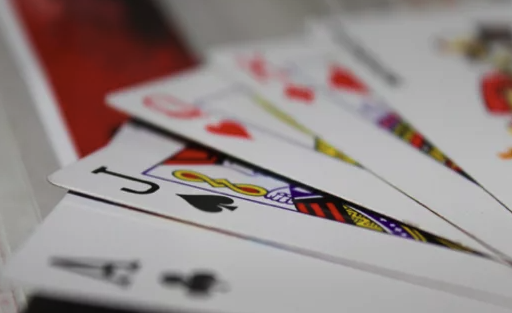Glossary Term
No Double After Split
No Double After Split
Used In: Blackjack
Introduction
In blackjack, the rule known as No Double After Split prevents players from doubling their bets on hands that result from splitting a pair. Typically, when a player splits two cards of the same value, each new hand offers the option to double down—placing an additional bet in exchange for committing to stand after receiving one more card. This rule removes that strategic choice, limiting player flexibility after splitting.
The absence of the double down option after a split changes the way players approach the game. It reduces the potential to increase winnings in advantageous situations, especially when splitting certain pairs like eights or aces, which are often strong candidates for doubling down. For players aiming to optimize their decisions based on card probabilities and expected values, this rule introduces a subtle but meaningful disadvantage.
Casinos often implement No Double After Split to shift the odds slightly in their favor. While it does not drastically alter the overall house edge, it can impact the profitability of some common blackjack strategies. Understanding this rule is essential for serious players who want to adjust their tactics and expectations accordingly when playing under these conditions.
Definition and In Depth Look
The No Double After Split rule in blackjack restricts players from doubling their bets on hands created by splitting a pair of cards. Normally, when a player splits, each new hand functions independently, and doubling down—betting an additional amount to receive only one more card—is allowed. This tactic is often used to capitalize on favorable odds when the next card is likely to improve the hand significantly. By disallowing doubling after a split, the rule removes a powerful opportunity for players to maximize potential gains on these new hands.
This rule has a measurable effect on blackjack strategy and player decision-making. Certain splits, like pairs of eights or aces, are typically strong candidates for doubling down after splitting because of the increased chance to build a winning hand. Without the ability to double, players must settle for just one additional card per split hand, limiting their upside potential. This adjustment forces players to alter standard strategy charts and accept a lower expected value from these hands, subtly increasing the house edge and diminishing overall player advantage.
Casinos implement No Double After Split as a way to protect their edge without making the game’s rules overly complicated or less appealing to players. While it does not drastically shift the fundamental odds, the rule targets specific high-value scenarios, making it harder for skilled players to fully leverage their strategic advantages. Understanding this rule and its impact on hand value and betting options is crucial for anyone looking to refine their blackjack play and manage risk effectively.
Key points:
- Prevents doubling down on hands formed after splitting pairs, limiting betting options.
- Reduces player expected value on common split hands like eights and aces.
- Slightly increases the house edge by restricting profitable strategic moves.
Mechanics
When a player is dealt a pair in blackjack, they have the option to split the cards into two separate hands, placing an additional bet equal to their original wager. Normally, after splitting, each hand is treated independently, and the player can choose to double down—doubling their bet in exchange for receiving only one more card—if the situation looks favorable. However, under the No Double After Split rule, this option is removed. Once the hand is split, players must play out each hand without the ability to increase their bet further by doubling down.
Mechanically, this means that after splitting, the player’s decisions become more limited. For example, if a player splits a pair of eights, they cannot double their bet on either new hand, even if the dealer’s upcard or the player’s next card suggests doubling would be advantageous. Instead, the player can only hit, stand, or surrender (if allowed), but cannot increase their wager mid-hand. This restriction affects the betting dynamics and reduces the player’s flexibility to capitalize on strong post-split hands, altering the flow and strategy of the game.
Advantages & Disadvantages
Advantages:
For casinos, the No Double After Split rule simplifies game management and preserves house edge without drastically changing the overall feel of blackjack. By limiting doubling down after splits, casinos reduce the chances of players exploiting favorable situations to increase their bets, which helps maintain profitability. The rule also streamlines dealer and player actions, making the game faster and easier to oversee in busy environments. As blackjack expert Stanford Wong notes,
“Restricting doubling after split is a subtle way casinos protect their edge while keeping the game accessible to casual players.”
Disadvantages:
For players, this rule removes a valuable strategic option, reducing potential winnings in key scenarios. Doubling down after splitting allows skilled players to maximize returns on strong hands, such as split aces or eights, where one more card can significantly improve the outcome. Without this option, the player’s ability to adjust bets based on improved odds is constrained, lowering the expected value of those hands. As professional blackjack player Don Schlesinger explains.
“No Double After Split cuts off an important line of attack in the player’s toolkit, making it harder to capitalize on favorable splits.”
Illustrated Example
Imagine a player is dealt a pair of eights against a dealer’s 6 upcard. The standard strategy is to split the eights, as 16 is a weak total but two hands starting with an 8 have better winning potential. After splitting, the player normally has the option to double down if the next card improves their hand. For instance, if the first split hand receives a 3, making it 11, doubling down would be a smart move to maximize winnings.
However, under the No Double After Split rule, the player cannot double down on this new hand. They must continue by hitting or standing without increasing their wager. This limitation reduces the potential gain since doubling down on 11 against a dealer 6 is generally a high-value play. The rule forces the player to play more conservatively after splitting, which can affect the overall expected value of the hand.
Below is a simple comparison of allowed actions with and without the No Double After Split rule after splitting a pair of eights:
| Action | Allowed With Double After Split | Allowed With No Double After Split |
|---|---|---|
| Split | Yes | Yes |
| Double Down on Split Hand | Yes | No |
| Hit on Split Hand | Yes | Yes |
| Stand on Split Hand | Yes | Yes |
Common Misconceptions
One common misconception is that the No Double After Split rule dramatically shifts the overall odds in favor of the casino. While it does reduce some player advantages, particularly in specific split scenarios, its impact on the house edge is relatively modest. Many players overestimate how much this rule alone affects the game’s fairness, overlooking that other factors like the number of decks and dealer hitting rules typically have a larger influence on overall odds.
Another frequent misunderstanding is that players lose all opportunities to increase their bets after splitting when this rule is in effect. In reality, players can still double down on their initial two-card hands before any split occurs, and they retain the option to hit or stand normally after splitting. The rule simply limits doubling down specifically on the newly created hands from a split, not on the entire game. Recognizing these nuances helps players adjust their strategies more accurately instead of assuming a blanket betting restriction.
Conclusion
The No Double After Split rule is a subtle but important factor that affects blackjack strategy and player decisions. While it does not drastically alter the game’s overall odds, it restricts a key betting option that skilled players use to maximize their advantage after splitting pairs. Understanding this rule allows players to adjust their tactics and manage expectations more effectively. For those aiming to optimize their play, recognizing when and how this rule applies is essential to making informed decisions at the table.
The Top Online Casinos for Blackjack Gambling
For avid blackjack enthusiasts seeking the top online casinos, a combination of factors sets certain platforms apart. These leading online casinos offer0 a diverse selection of blackjack variants, seamless gameplay experiences, generous bonuses tailored to blackjack players, and stringent security measures to ensure fair and safe gaming environments.


Author
Branimir Ivanov | Senior News Contributor






